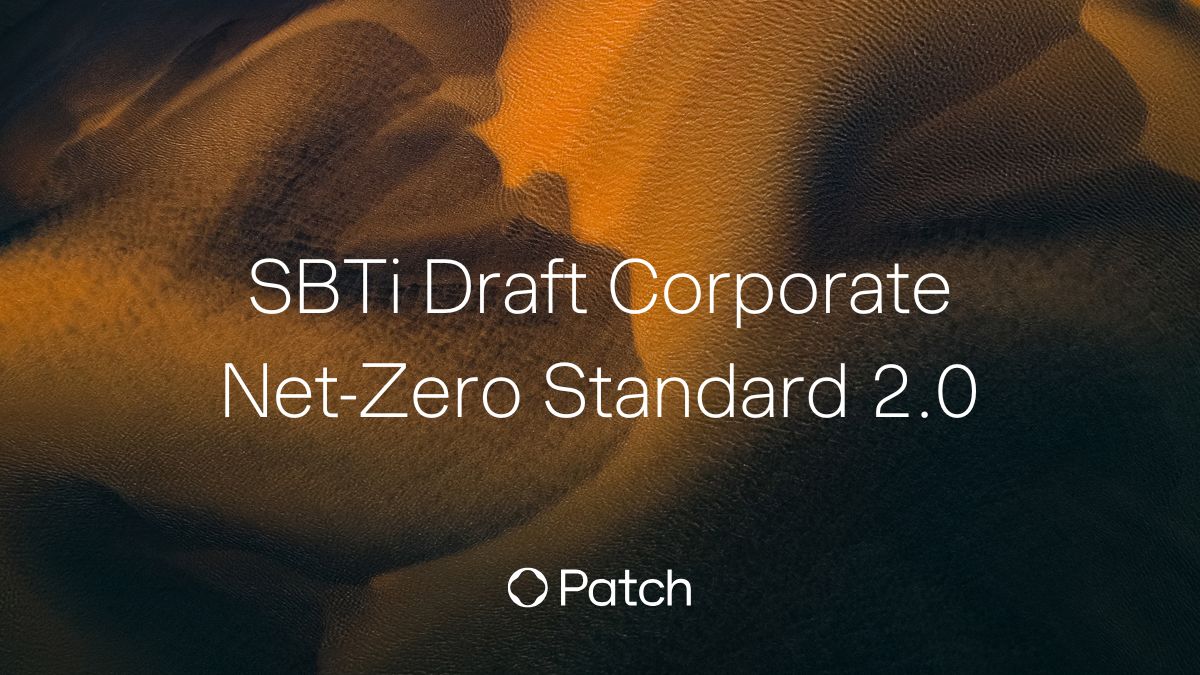As we head into November, this year’s Conference of the Parties (COP28) is on every climate and sustainability professional’s mind. Here, we reflect on the major developments in carbon markets since COP27 and what we’ll be watching out for during COP28.
The year that was: growing appreciation for carbon removal, increased urgency for unified standards
At COP27, we saw noticeable shifts in the climate dialogue. Discussion of carbon dioxide removal (CDR) was more present than ever before, indicating a growing recognition of the critical role CDR will play in reversing global temperature rise.
It was also broadly acknowledged that investment in these critical climate solutions — both carbon removal and avoidance projects — was hampered by the current state of the voluntary carbon market (VCM). A lack of unity around carbon credit quality assurance, combined with confusion about the role of carbon credits within broader climate action strategies, impededprogress towards scaling these solutions.
But recent developments in carbon markets may be shifting the landscape. 2023 saw significant progress with voluntary carbon credit standards and guidelines, including the release of the ICVCM’s Core Carbon Principles and the VCMI’s Claims Code, which provide initial rules of the road for project developers and businesses, respectively. Although further guidance is still to be delivered, these notable developments demonstrate that we are closer than ever to achieving clarity and unity within the VCM.
What we’re watching for at COP28
The role of carbon removals in government climate strategies; operationalization of Article 6 market mechanisms
COP28 will be the conclusion of the first-ever global stocktake, which will reveal the true climate progress of countries and stakeholders.
Concrete targets and a clear designation of CDR’s role within climate strategies is critical. One route might be setting twin targets for carbon reductions and removals, reinforcing that one is not a substitute for the other. The stocktake will also reveal information gaps that will make it difficult to determine how much CDR needs to be scaled to keep warming at bay. We need a transparent and scientifically robust process for filling these data gaps.
We’ll also closely follow conversations of market mechanisms for Article 6 of the Paris Agreement. Recent updates to Article 6 may impact price and volume of future credit issuances in the VCM, as host countries seek to withhold some credits for domestic use. Although the basic rules are already in place, we anticipate more detailed consultation on operationalization, an essential piece of the puzzle. The VCM remains our most viable channel for funding carbon removal and avoidance projects that will be essential to reaching the Paris climate goals.
Carbon removal is not the problem
Among both the formal negotiations and the conversations happening across the private sector, NGOs, and the public, we’ll be watching for language that conflates CDR (removal of pre-existing atmospheric carbon dioxide) with CCUS (Carbon Capture, Utilization, and Storage — essentially, technology used to mitigate net new emissions from industrial processes). Public discussion frequently confuses the two, mistakenly lumping CDR (a necessary tool for reversing climate change) with CCUS (promoted as a ‘solution’ for allowing the oil and gas industry to continue with business as usual). This has led to widespread apprehension about scaling CDR.
Scalable carbon credit procurement strategies for the public and private sector
At COP28, we expect to see active conversation from both the public and private sectors on procuring carbon credits in ways that support innovation and scale. Where last year laid the foundation, this year, we must put pen to paper.
Some promising developments throughout 2023 show growing interest in the role of public sector CDR procurement. For example, the US Department of Energy (DOE) recently announced the Carbon Dioxide Removal Purchase Pilot Prize of $35 million, through which companies can compete to sell carbon removal credits directly to the US government via offtake agreements. This initiative is part of the Biden Administration's larger effort to advance CDR development and scale, leveraging government funding and support to help spur additional private investment.
In the private sector, more corporate buyers are looking at offtake agreements for carbon credits. These agreements have the dual benefit of securing quality supply for buyers while providing a much-needed, stable funding source for critical carbon projects.
Operationalizing a high-integrity carbon market
We expect to see talks reaffirming the role of high-integrity voluntary carbon markets in driving climate finance and capital to carbon removal and avoidance solutions, particularly in the Global South.
Without confidence in credit quality and clarity around credible use of carbon credits, buyers are reluctant to invest, and capital that could be used to scale removal capacity is left on the sidelines.
New guidelines released this year by ICVCM and VCMI give hope that clarity is coming, but these rules need to be actionable, allowing corporate buyers to engage with the VCM in meaningful and efficient ways. This COP, look for ongoing discussions between market actors on how to operationalize a high-integrity market.
The COP28 Presidency is championing the VCM, so watch for relevant announcements, particularly on December 4.
Connect with our team
Patch will be on the ground at COP28 and taking part in many of these efforts to help shape the carbon market of the future. If you’re heading there, we’d love to connect.
See our event page for more information and to sign up for our post-COP28 webinar.






